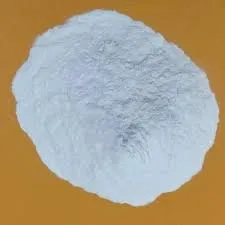
nóv . 07, 2024 21:13 Back to list
Enhancing Mortar Performance with Adhesive Additives for Optimal Construction Results
The Role of Mortar Adhesive Additives in Construction
In modern construction, the need for durable and reliable materials cannot be overstated. Mortar, a critical component in masonry and construction, is typically composed of sand, water, and cement. However, as the demands of construction evolve, so do the formulations of mortar. One significant advancement in this field has been the incorporation of adhesive additives into mortar mixtures. This article explores the importance of mortar adhesive additives, their benefits, and their impact on construction quality.
Understanding Mortar Adhesive Additives
Mortar adhesive additives are chemical substances added to traditional mortar formulations to enhance their performance. These additives improve the bonding capacity of the mortar, increase its flexibility, and enhance its resistance to environmental factors such as moisture and temperature fluctuations. Common types of adhesive additives include polymers, latex emulsions, and various chemical modifiers. They can significantly alter the properties of mortar, making it more suitable for a diverse range of applications.
Benefits of Using Adhesive Additives
1. Enhanced Bond Strength One of the primary benefits of using adhesive additives in mortar is the improved bond strength between the mortar and the masonry units. This increased adhesion is particularly important in vertical applications and when working with non-porous materials. The enhanced bond strength ensures the structural integrity of the construction, reducing the risk of cracks and failures over time.
2. Increased Flexibility Traditional mortar can be rigid, leading to potential cracking when subjected to stress or temperature changes. Adhesive additives impart flexibility to the mortar, allowing it to expand and contract without losing its integrity. This flexibility is crucial in regions that experience extreme weather conditions or in structures that are subject to movement, such as high-rises and bridges.
3. Improved Workability Mortar with adhesive additives often exhibits better workability, meaning it can be applied more easily and adheres better to surfaces. This improved workability not only enhances the efficiency of the application process but also allows for more intricate designs and finishes.
mortar adhesive additive

4. Resistance to Moisture and Chemicals Many adhesive additives enhance the water resistance of mortar, protecting it from moisture infiltration that can lead to mold, mildew, and structural degradation. Furthermore, certain additives provide chemical resistance, making them suitable for use in environments exposed to harsh chemicals, such as industrial settings.
5. Reduced Shrinkage The incorporation of adhesive additives can also help to minimize shrinkage in mortar as it cures. Reducing shrinkage helps prevent cracks and other defects in the finished product, contributing to the longevity and durability of structures.
Applications of Mortar with Adhesive Additives
Mortar mixed with adhesive additives can be used in a variety of applications. It is particularly beneficial in tile installation, where a strong bond is essential to ensure that tiles adhere securely to surfaces. In addition, it is commonly used in exterior and interior wall construction, where durability and resistance to environmental factors are crucial.
In renovations and restorations, where the integrity of existing structures is paramount, adhesive additives can provide the necessary strength and flexibility to accommodate existing materials without compromising the overall structure. Similarly, in regions prone to seismic activity, flexible mortars with adhesive additives can help buildings withstand earthquakes.
Conclusion
Incorporating mortar adhesive additives represents a significant advancement in construction technology, addressing many of the challenges faced by traditional mortar formulations. From enhanced bond strength and flexibility to improved workability and moisture resistance, these additives play a vital role in modern construction practices. As the construction industry continues to innovate, the use of mortar with adhesive additives is likely to become even more prevalent, contributing to safer, more durable, and more efficient building practices. Deploying these advanced materials is not just an option; it is increasingly becoming a necessity in achieving high-quality construction outcomes. By embracing these advancements, builders can ensure that their structures stand the test of time, providing lasting value and safety for generations to come.
-
Versatile Hpmc Uses in Different Industries
NewsJun.19,2025
-
Redispersible Powder's Role in Enhancing Durability of Construction Products
NewsJun.19,2025
-
Hydroxyethyl Cellulose Applications Driving Green Industrial Processes
NewsJun.19,2025
-
Exploring Different Redispersible Polymer Powder
NewsJun.19,2025
-
Choosing the Right Mortar Bonding Agent
NewsJun.19,2025
-
Applications and Significance of China Hpmc in Modern Industries
NewsJun.19,2025







